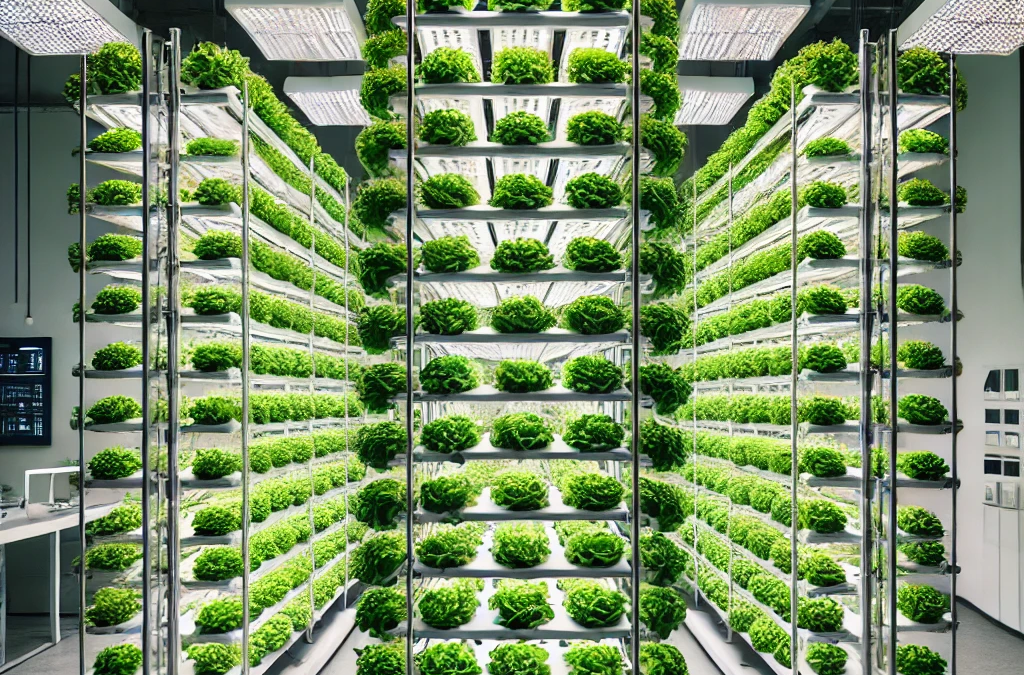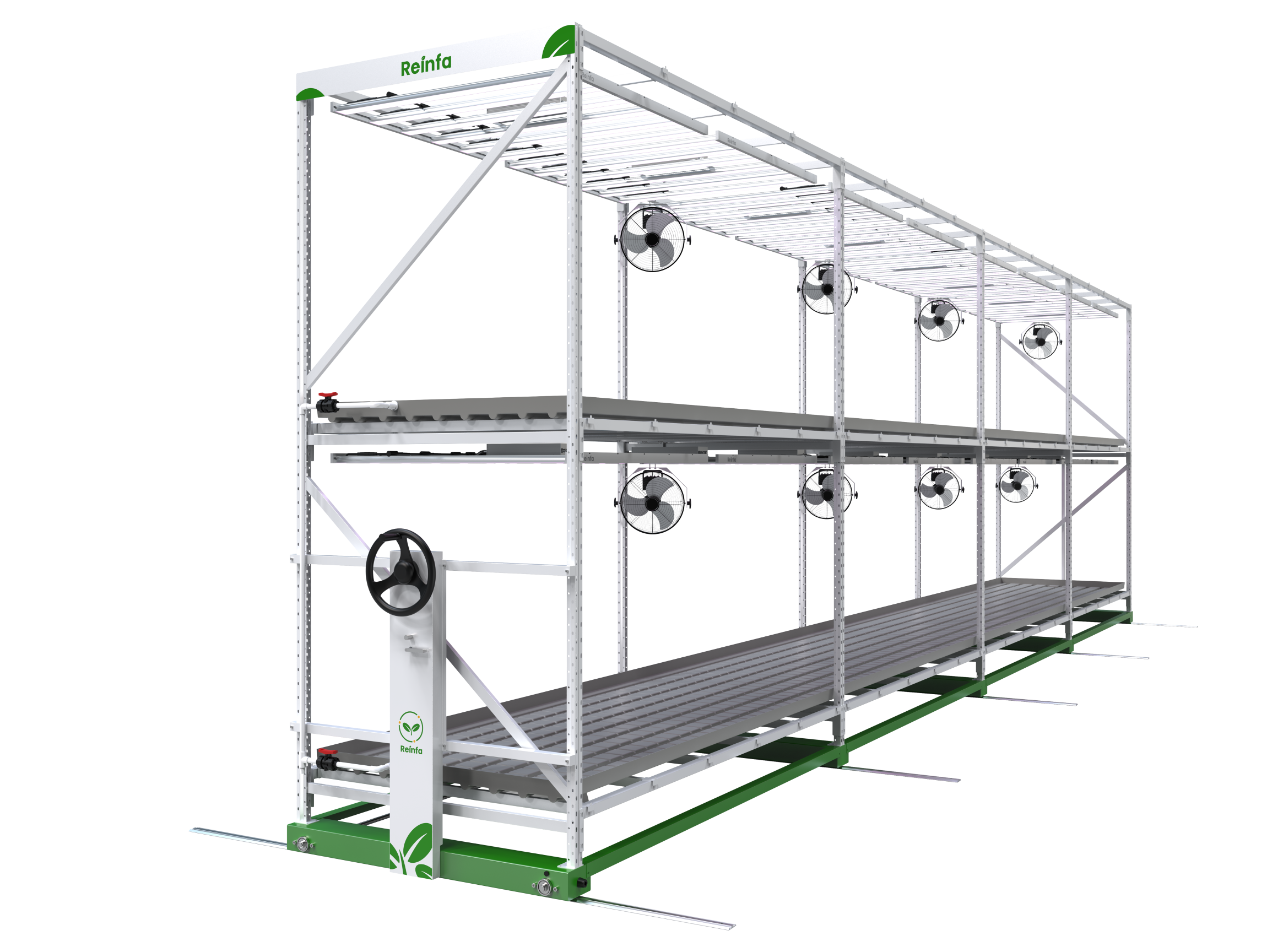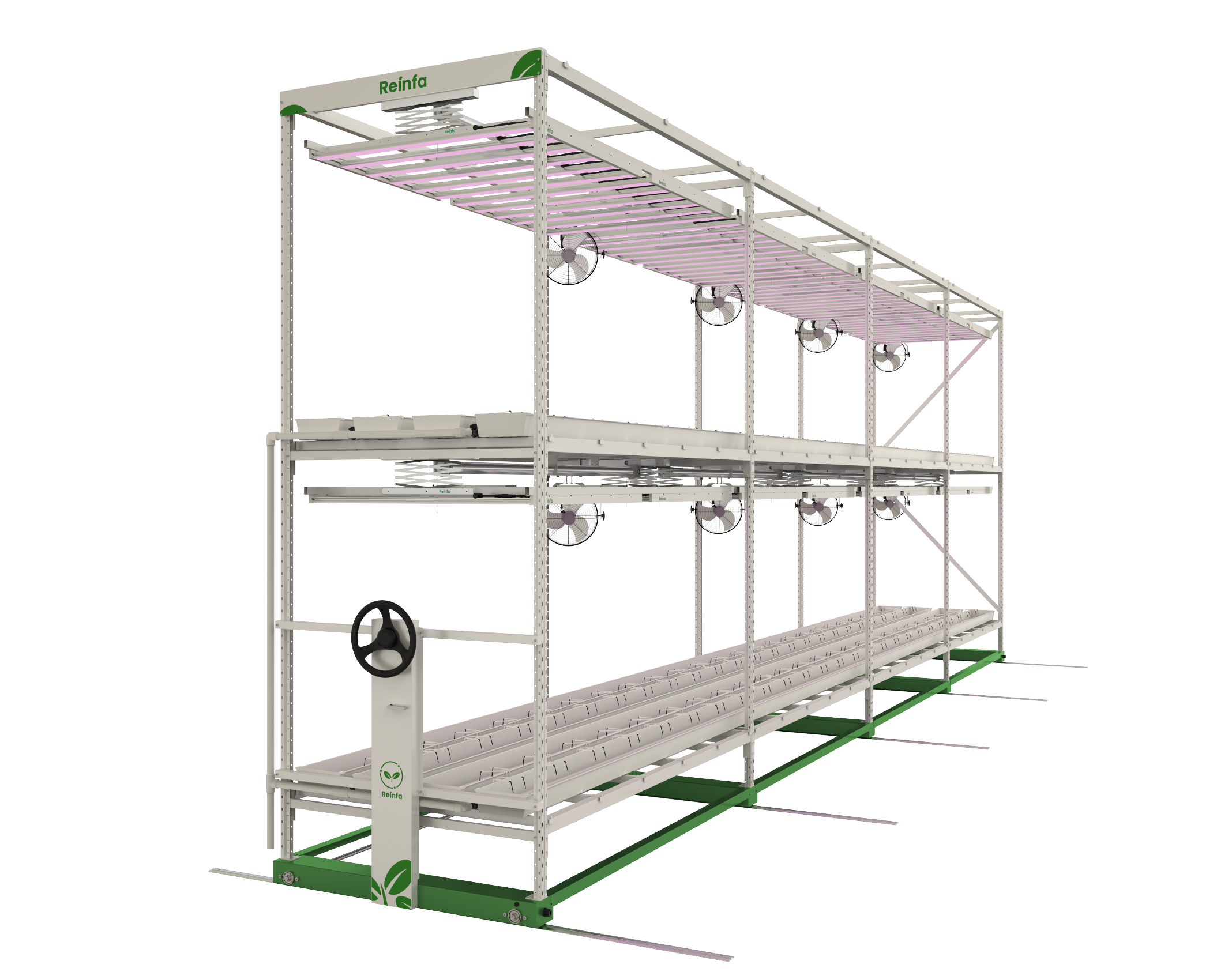Vertical farming has evolved to offer several types of systems, each suited to different crops and cultivation goals. These systems allow for the optimization of space, resources, and growing conditions, enabling more efficient and sustainable farming practices. Reinfa, a vertical farming manufacturer, offers various systems tailored to specific plant needs. In this post, we will explore four key categories of vertical farming systems and their applications: FarmHydro, FarmAero, UniFarm, and FarmDrip.
1. FarmHydro: Hydroponic Systems

Hydroponics is a method of growing plants without soil, using nutrient-rich water to deliver essential minerals directly to plant roots. FarmHydro, Reinfa’s hydroponic system, utilizes the nutrient film technique (NFT). In this system, a thin film of nutrient solution continuously flows over the roots of plants, providing them with the necessary nutrients and oxygen.
FarmHydro is particularly effective for growing lettuce, which thrive in a controlled environment with optimal light, water, and nutrient delivery. The compact design of hydroponic systems maximizes space, allowing for high-density planting, which is essential in vertical farming where efficient use of space is a key advantage.
2. FarmAero: Aeroponic Systems

Aeroponics is another soil-less cultivation method but differs from hydroponics by suspending plants in the air and misting their roots with a nutrient solution. Reinfa’s FarmAero system is designed for crops that require more robust root aeration and moisture control. In this system, the roots are exposed to the air and periodically sprayed with a fine mist, which enhances oxygenation and nutrient absorption.
This system is especially suited for long life cycled plants such as cannabis, tomatoes, peppers, and cucumbers. The increased oxygen supply to the roots can lead to faster growth rates and healthier plants. Additionally, aeroponics uses less water than traditional hydroponics, making it a more sustainable option for water-scarce environments.
3. UniFarm: Ebb and Flow Systems
The ebb and flow system, also known as flood and drain, is one of the simplest forms of hydroponics and is incorporated into Reinfa’s UniFarm system. This method involves periodically flooding the plant root zone with nutrient solution and then draining it away, allowing the plants to absorb nutrients before the water recedes. This cycle ensures that plants receive the right amount of nutrients and oxygen without over-saturation.
UniFarm’s versatility makes it suitable for a wide range of crops, from leafy greens to larger plants. The system is easy to manage and provides flexibility for farmers who want to grow different types of crops in the same space.
4. FarmDrip: Drip Irrigation Systems
FarmDrip is Reinfa’s solution for crops that require a more targeted and consistent water supply, such as strawberries, flowers, and medicinal plants. In this system, water and nutrients are delivered directly to the base of each plant through a network of drip emitters. This method reduces water waste and ensures that each plant gets the precise amount of water it needs, which is particularly beneficial for crops that are sensitive to overwatering.
Reinfa’s vertical farming systems—FarmHydro, FarmAero, UniFarm, and FarmDrip—provide tailored solutions for a variety of crops and growing conditions. These systems not only maximize space and resources but also offer sustainable farming options that can be adapted to various environments. Whether you are growing leafy greens, fruiting vegetables, or medicinal plants, there is a vertical farming solution that can meet your needs.
For more information, visit Reinfa Vertical Farming Solution.





